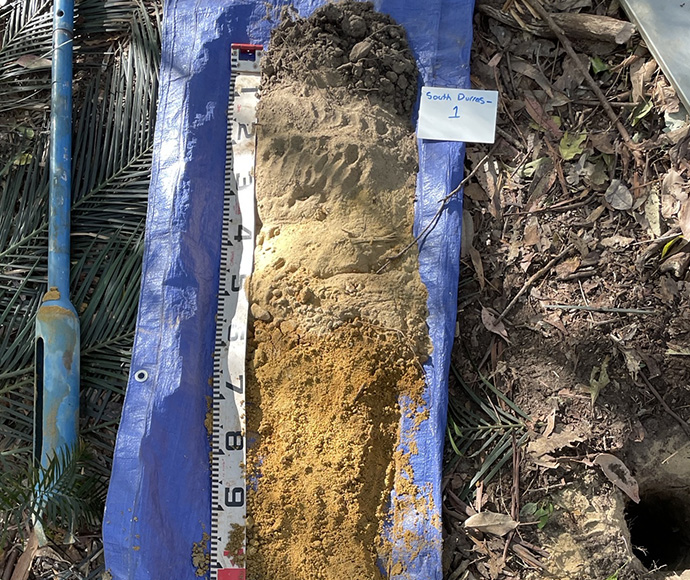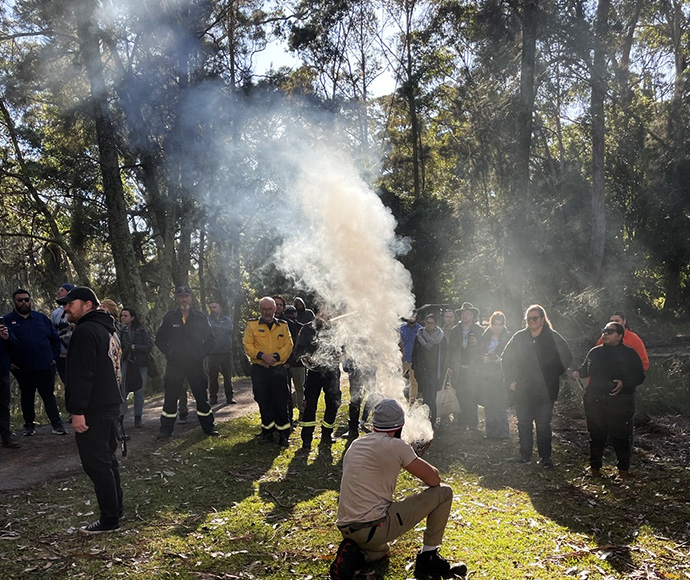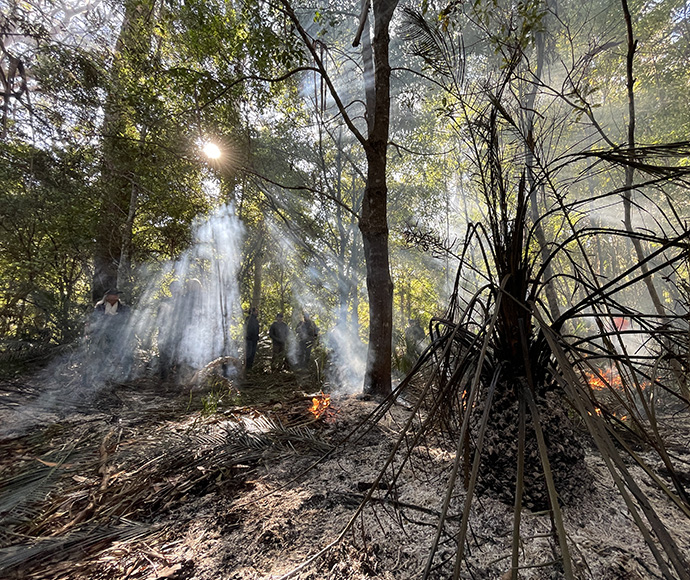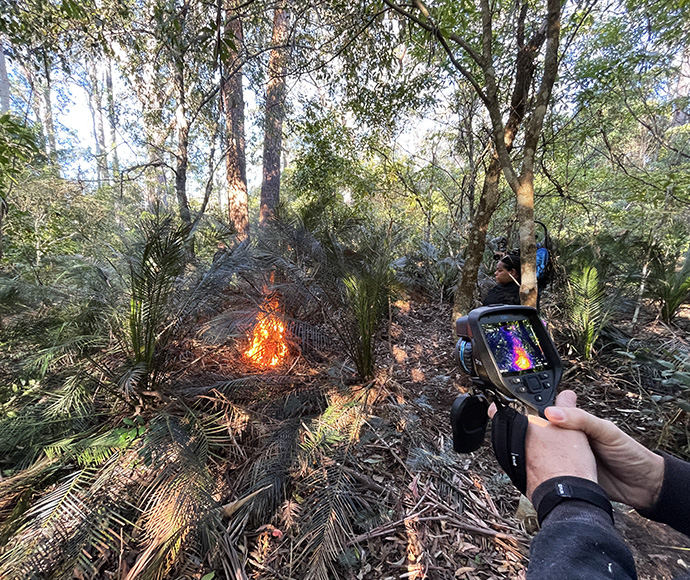Cultural burning and soils testing with the Batemans Bay Local Aboriginal Land Council
The Department of Planning and Environment Soil and Landscape Assessment Team were recently invited by the Batemans Bay Local Aboriginal Land Council to participate in cultural burning activities in Walbunja country on the NSW South Coast.
The soils team undertook soil testing to collect data on the effects of cool burns on soil properties and soil microbiology.
The team was privileged to meet with Local Aboriginal Land Council members and were thankful for the opportunity to learn from them. The team gained a better understanding of how cultural burns work, the timing and purposes of the burn and the ecological benefits of cool burning. The purpose of this particular burn was to reset the environment and re-establish the right species composition.
The local vegetation in the burn area comprised large spotted gum (Corymbia maculata), bangalays (Eucalyptus botryoides) and native daphne (Pittosporum undulatum) with an understory that included burrawangs (Macrozamia communis). The cool, low intensity fire focused on burning in and around the burrawangs. The fire moved slowly and allowed any wildlife and critters to escape.
The soils team collected soils data before, during and after the burn. Temperature probes were installed at several depths in the soil prior to the burn to monitor the soil temperature and duration of the heat during the burn. A ground cover assessment was undertaken at sites across the burn area, and soil samples for chemical, physical and biological testing were collected pre and post burn. Thermal cameras were also used as the burning took place.
The knowledge sharing was reciprocated as the Local Aboriginal Land Council rangers spent the day with the soils team, enthusiastic to learn about the temperature probes, helping to install them and understand the nature of data being collected.
The soils team and their partners, the Mothers Ancestral Guardians Indigenous Corporation (MAGIC), have conducted cultural burns across New South Wales as part of an overall larger cultural burning project funded by an NSW Environmental Trust grant. The project incorporates traditional ways with the latest science, providing data to support the rich traditional knowledge of the land.
It is hoped that the data collected will contribute towards:
- a greater shared understanding of the impacts and benefits of cultural burning on soil health
- improved soil health in different landscape settings through appropriate use of fire intensities
- reduced fuel loads to help address bush fire risks
- sustainable land management practice
- enhanced capacity of the NSW community to integrate cultural practices for habitat conservation and protection.





